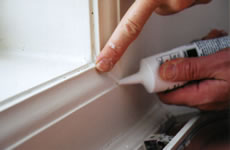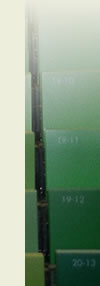
 |
 |
Frequently Asked Questions
What is the process after I call or e-mail you?
Antoine will meet with you, in your home or on the job site, to discuss your project and make sure he understands your wishes. Soon afterwards, you will receive a written estimate. If you have any questions about it, they will be discussed. After you ask us to proceed with the work, a starting date will be scheduled. You will be asked to pay, by cheque, one third of the amount of the contract when the work starts. The balance will be due when the work is completed. At the end, you will be given a written invoice for your records.
Is it going to be smelly and make a mess?
Plastering and sanding do create dust. We will do our utmost to minimize it. All floors will be carefully protected with drop sheets, and your furniture covered with plastic. Other areas of your house or apartment will be blocked off with plastic so that they remain as much as possible dust-free. At the end of the project, we will clean carefully the rooms where we have worked. Some smell is unavoidable when you paint. We will work with water-based paint (latex), which is a lot less smelly, unless the surface requires a oil-based product (stucco ceilings; rusted metal; water or nicotine stains). Or unless you specifically ask us to use an oil-based paint.
What brand of paint do you use?
We work mostly with Sico. This is a Canadian manufacturer whose quality we trust. Our main supplier is The Paint Depot. We can, of course, match any color you wish. If you prefer the products of another manufacturer, we will gladly use them. We always use the best quality available.
How do people choose colours? I can't make up my mind.
Choosing colours can be bewildering. Each manufacturer offers a few thousands! Fashions come and go. We recommend that you start by asking yourself what colours you like (e.g. which ones are dominant in the clothes you buy?).
Light shades will usually make a space look bigger, darker ones can add warmth to a room. A sense of harmony can be obtained in many different ways.
Antoine will be happy to help you clarify what you want. If you need more elaborate advice (for instance, if you intend to combine the painting of your home with the acquisition of new furniture or window coverings), we can refer you to one of the interior designers with whom we work regularly.
What finish is best?
It depends on the intended use of the room. And on what you like seeing. Some people find shiny surfaces attractive. Others prefer mat ones. From shiniest to mattest, the finishes are as follow: gloss, semi-gloss, pearl, eggshell (sometimes called velvet or satin), and flat (mat).
Usually, the shinier a surface, the easier to wash and keep clean. That's why a semi-gloss or a pearl is often used on trim and in kitchens and bathrooms. In other rooms, most people go for a flat or an eggshell. If there are young children, or a lot of traffic, eggshell might be better. Flat has the softest, smoothest and warmest look since it barely reflects the light. It also makes it possible to hide unevenness in an older wall. But it gets damaged more easily.
Are you insured?
We are. Earthtones Painters carries a liability insurance of up to 2 million dollars. And all of our painters are covered by the Workers Safety Insurance Board.
How often should I paint the exterior of the house?
There is no set rule. But it is a good idea to repaint before signs of stress start appearing.
In most circumstances, every four or five years seems to be a good rhythm. Areas exposed to abundant moisture or long hours of direct sunshine need to be more closely monitored.
 I just need a bathroom painted. Is it too small a job for you?
I just need a bathroom painted. Is it too small a job for you?
Not at all! We handle painting projects of all sizes, throughout the Toronto area.
Occasionally, we go farther. We have painted cottages in Muskoka and houses in Renfrew County.
Is there a way of doing things which is more environmentally friendly?
Yes, there is. When paint dries, it releases gases and chemicals in the atmosphere, which contribute to air pollution and global warming. Oil paint (alkyd) which is solvent-based is much worse than latex paint in this respect. This is why we prefer to use latex. Doing so has also, of course, an immediate advantage for your health and ours.
Many people fear that a latex paint will not be as durable and cleanable as an alkyd. This was the case twenty years ago, but not any more. Most manufacturers actually recommend their latex over their oil. Latex products are better able to shrink and expand, according to the changes in temperature. They are much less likely to crack. And they are just as tough. There is even talk in the industry about phasing out most oil-based products.
Some recent types of latex paint release, according to recent research, no significant amount of noxious fumes at all while they dry. They are called "Zero VOC (Volatile Organic Compounds)".
They are, at this stage, not always available in every type of finish.
What should I do with leftover paint?
It is a good idea to keep a little bit for any touch-ups that might be required later on. When you store paint, keep in mind that latex must not be allowed to freeze and that alkyd should never be stored close to a furnace, as it could catch on fire. Please read the manufacturer's instructions carefully.
If you need to get rid of old paint, call your municipal waste disposal service. They will tell you about the closest depot where you can take it for safe disposal. They might even come and pick it up for free. In Toronto, call the "Toxic Taxi" at 416-392-4330.
Do you have any further questions? Please feel free to contact us.
